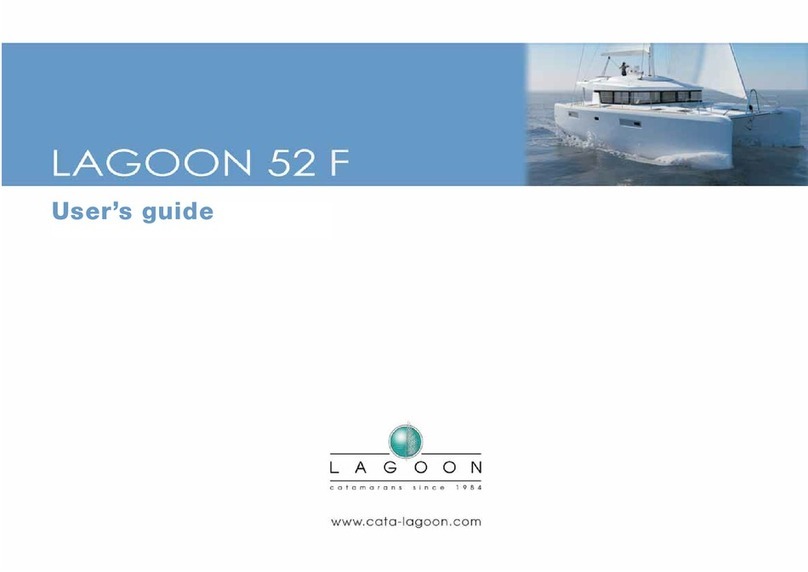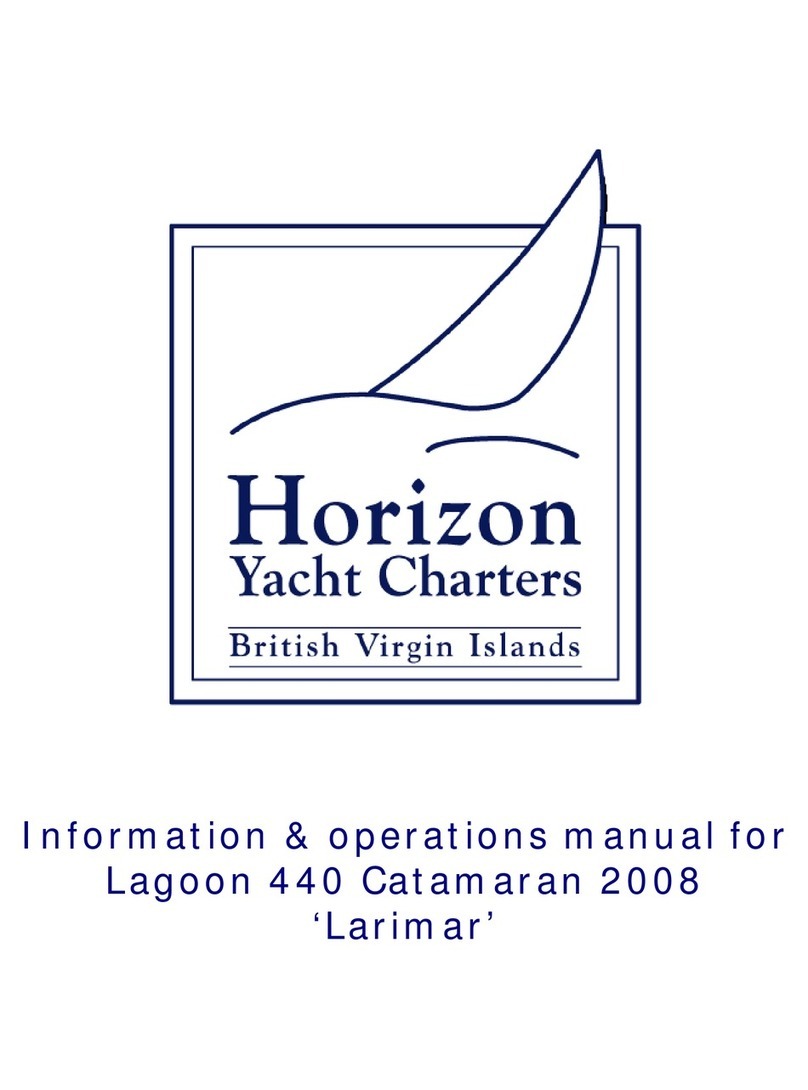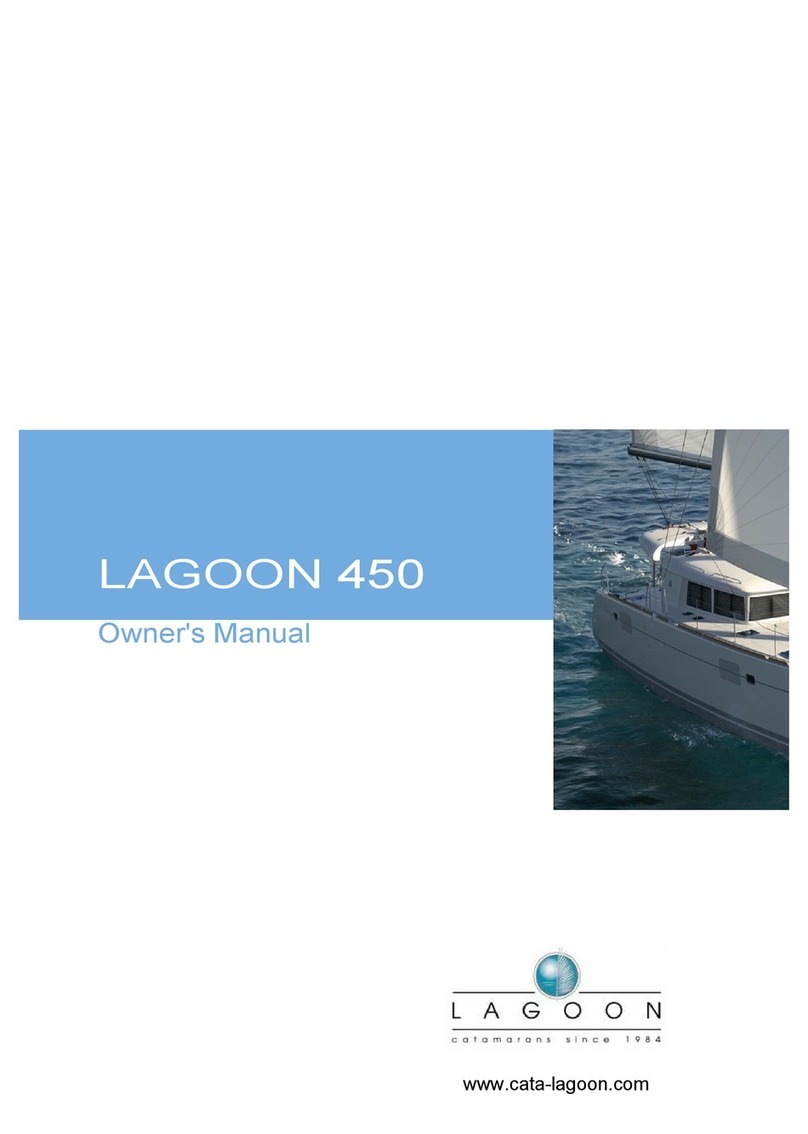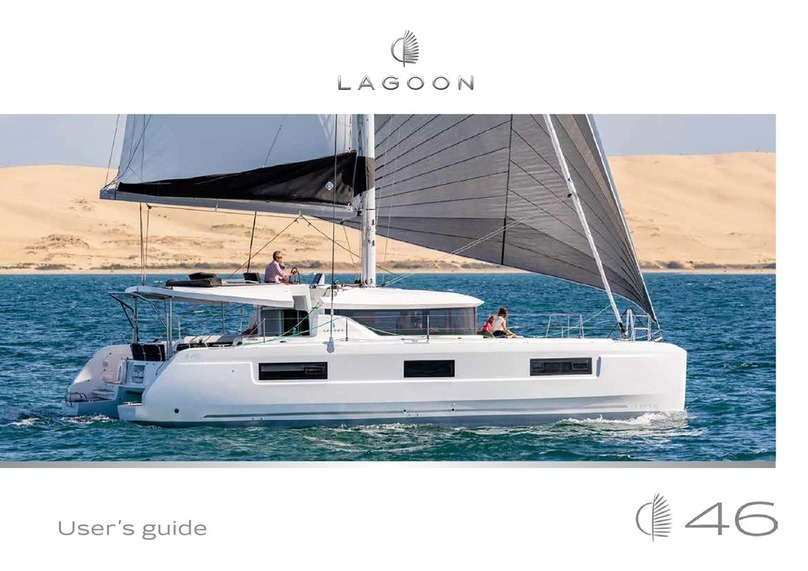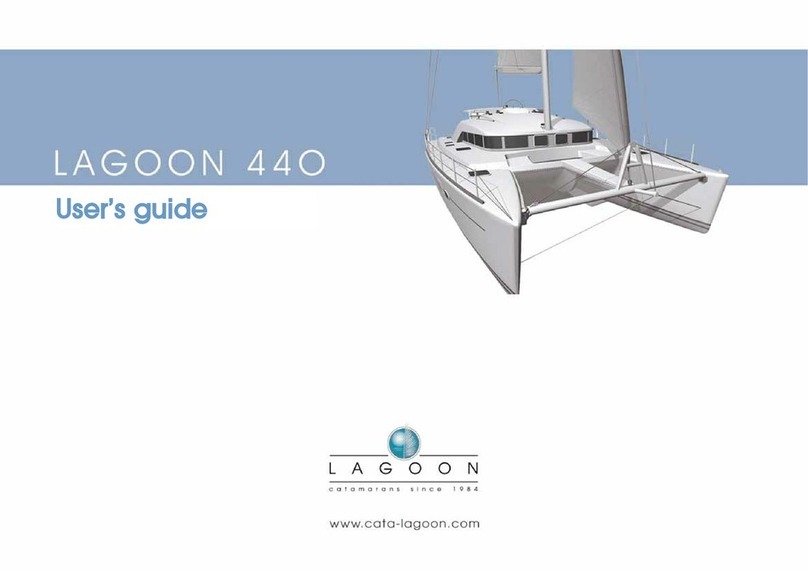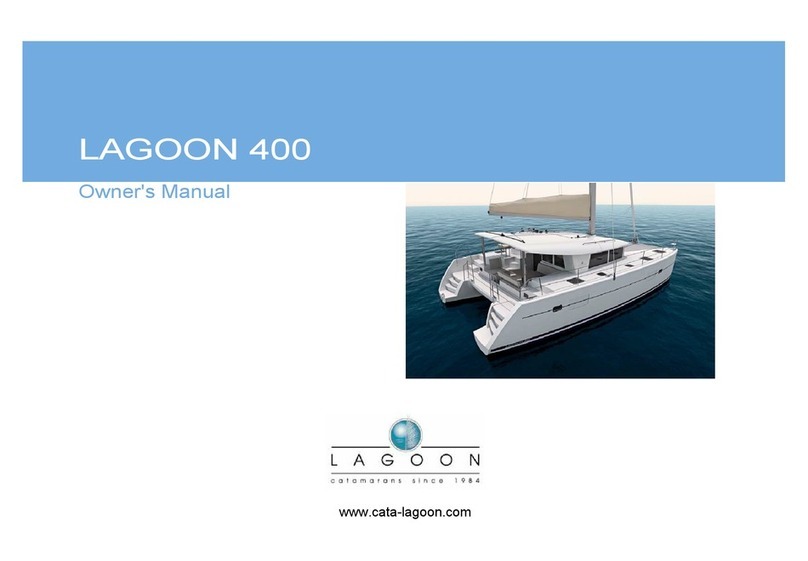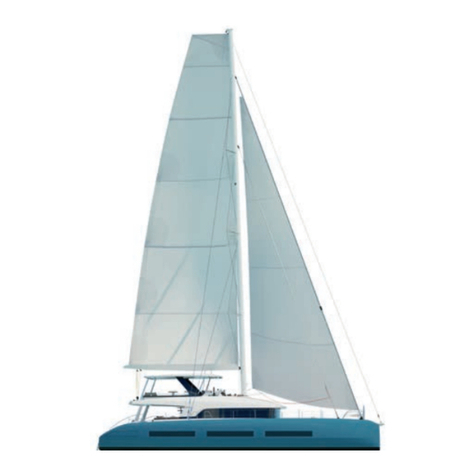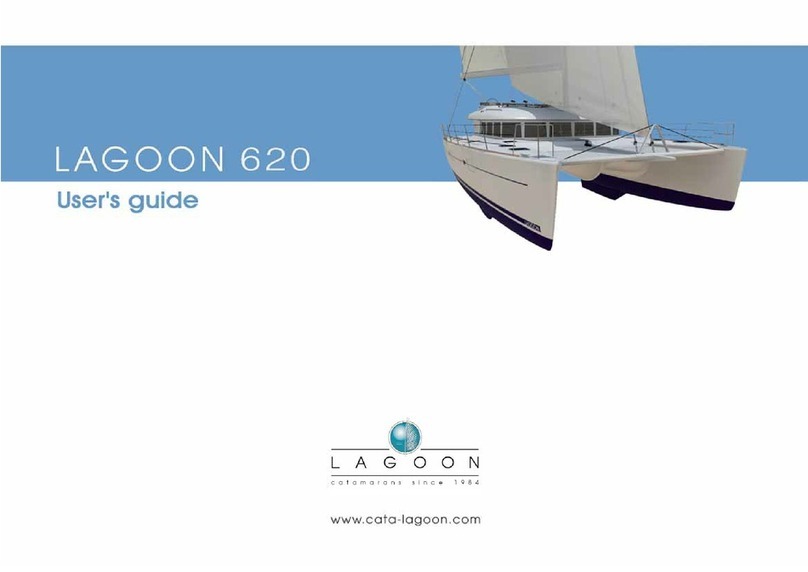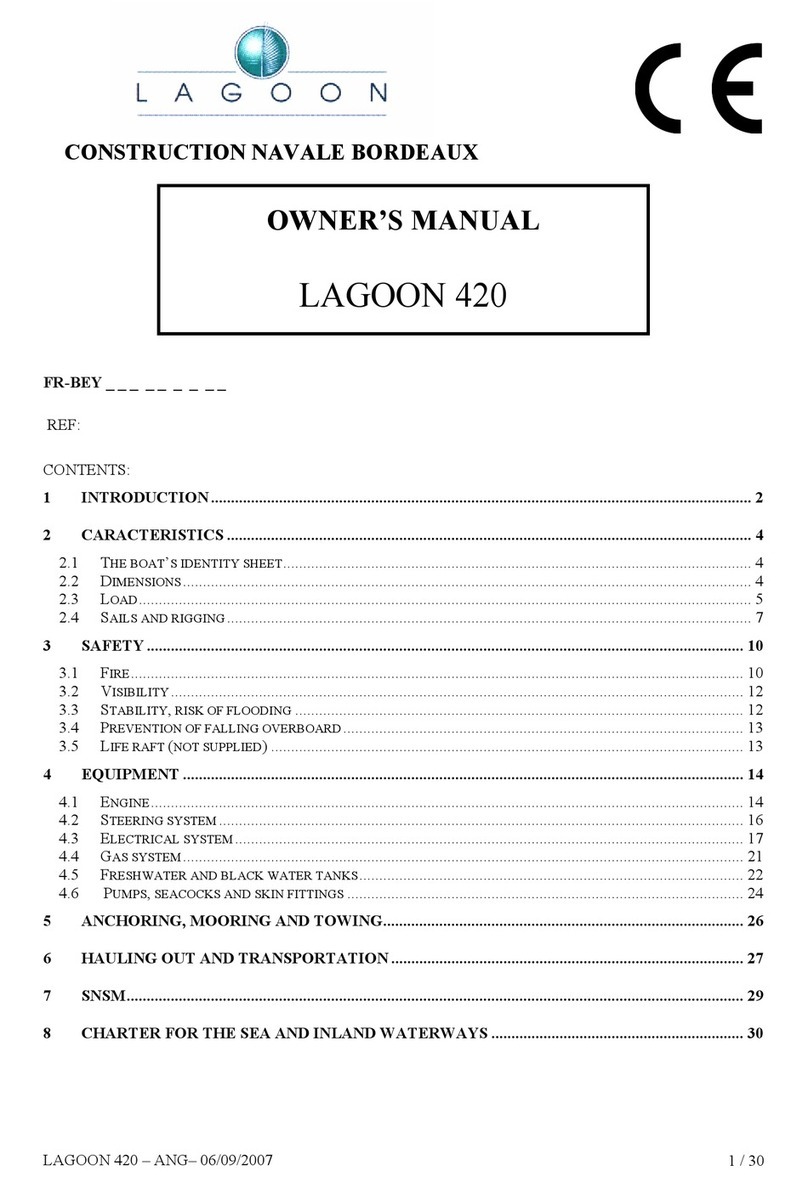4
Dear Sir / Madam,
You have just taken delivery of your new
LAGOON and, rst of all, we thank you for the trust
you have shown in buying a boat of our brand.
A LAGOON is made to last. From its design
to its construction and eventually to its launching,
every boat, includingthesmallest details, is considered
with the very care it deserves in order to ensure
you the years of joy you expect.
This manual is intended to help you enjoy your
boat in safety. It includes many details about the boat
specications, the provided or installed equipment
and also information on how to use it. Read it carefully
and familiarize yourself with the boat before sailing.
This Owner's manual is not a course on safety
at sea or good sailing sense. If this is your rst boat,
or if you are changing to a new type of boat with
which you are not familiar with, both for your comfort
and your safety, we would advise you to obtain some
training before taking the helm of your new boat.
Your retailer, your national sailing or motor vessel
federation or your yacht club would be delighted to
inform you about the local sailing schools or skilled
instructors in the area.
Make sure that the forecast wind and sea
conditions match with the build category of your boat,
and that you and your crew are capable of sailing safely
your vessel in such conditions. Even when your boat is
suited, the sea and wind conditions corresponding to
the build categories A, B and C may vary from heavy
storm for the A category to severe conditions for the
C category. These situations, during which may occur
exceptional waves and gusts, are therefore dangerous
and only an experienced crew, well trained and
prepared is able to sail a vessel, provided it is properly
maintained.
This Owner's manual is not a course in
maintenance and repair. In case of diculty, do not
hesitate to ask your builder or representative. If a
maintenance manual is provided, do not hesitate to
use it. Always ask an experienced professional for the
maintenanceor your boat, for the installation offurther
accessories or for any modication. Any modication
which may alter the safety specications of the boat
have to be estimated, carried out and documented
by qualied people. The builder can not be liable for
modication that would not have been approved.
Please note that, in some countries, a sailing
license or authorization is required or specic
regulation has to be observed.
Always keep your boat correctly maintained
and take into account the damages due to time or,
if applicable, due to an intensive or inappropriate
usage of the boat. Any boat, as solid as it can be,
may be severely damaged if not sailed properly.
This is not compatible with a safe sailing experience.
Always adapt the speed and the direction of the boat
to the sea conditions.
If your boat is tted with a life raft, read
carefully its user's guide. It is necessary that the
crew can nd on board all the safety equipment
(life jacket, harness, etc.) corresponding to the vessel,
to the weather conditions, etc. This equipment
has been made mandatory by some countries. It is
necessary for the crew to be familiarized with the use
of all the safety equipment and with the emergency
safety procedures (MOB, towing, etc.). Sailing schools
and yacht clubs often oer training sessions.
It is recommended that everybody wears
appropriate safety equipment (life jacket, individual
buoyancy aids) when they are on the deck. Please note
that, in some countries, always wearing a buoyancy
aid in conformity with the local standards has been
made compulsory.
1






